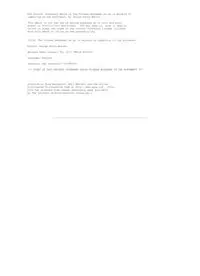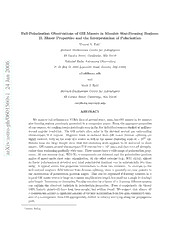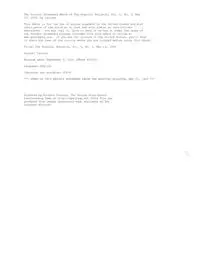
Preview The Hospital Bulletin Vol V No 3
The Project Gutenberg EBook of The Hospital Bulletin, Vol. V, No. 3, May 15, 1909, by Various This eBook is for the use of anyone anywhere in the United States and most other parts of the world at no cost and with almost no restrictions whatsoever. You may copy it, give it away or re-use it under the terms of the Project Gutenberg License included with this eBook or online at www.gutenberg.org. If you are not located in the United States, you'll have to check the laws of the country where you are located before using this ebook. Title: The Hospital Bulletin, Vol. V, No. 3, May 15, 1909 Author: Various Release Date: September 2, 2016 [EBook #52967] Language: English Character set encoding: UTF-8 *** START OF THIS PROJECT GUTENBERG EBOOK THE HOSPITAL BULLETIN, MAY 15, 1909 *** Produced by Richard Tonsing, The Online Distributed Proofreading Team at http://www.pgdp.net (This file was produced from images generously made available by The Internet Archive) 41 THE HOSPITAL BULLETIN Published Monthly in the Interest of the Medical Department of the University of Maryland PRICE $1.00 PER YEAR Contributions invited from the Alumni of the University. Business Address, Baltimore, Md. Entered at the Baltimore Post office as Second Class Matter. Vol. V BALTIMORE, MD., MAY 15, 1909 No. 3 THREE ESOPHAGEAL CASES. By Richard H. Johnston. M. D., Lecturer on Laryngology in the University of Maryland, Surgeon to the Presbyterian Hospital, Baltimore. The esophagoscope has passed the experimental stage in the diagnosis and treatment of esophageal lesions. Its usefulness has been demonstrated so often that it would seem superfluous to dilate upon its value. Its use, however, is not as general as it should be. There are still those who consider esophagoscopy unnecessary or impracticable. At the Presbyterian Hospital we have had numerous instances of its practicability, and with us it has become the routine practice to examine all patients complaining of obscure esophageal symptoms. Dr. Chevalier Jackson records the case of a patient whose only symptom was a lump on swallowing. She appeared to be a neurasthenic, and his advice to have the esophagus examined was ignored by the family physician. Two months later, with the patient etherized for a radical antrum operation, he passed the esophagoscope and found a malignant growth. Three interesting cases have recently come under my observation, and they illustrate so well the value of the esophagoscope I shall report them somewhat in detail. The first patient was seen with Dr. E. B. Freeman; she was 67 years old. The morning before she came to the hospital, while eating ham, she swallowed a large piece that had not been sufficiently masticated. It lodged in the introitus esophagi and remained there. When she came to the hospital she had swallowed neither solid nor liquid food for nearly thirty-six hours. A half hour before examining the esophagus she was given a hypodermic of morphia and atropia. With the patient in the sitting position the throat and upper end of the esophagus were anesthetized with 10 per cent solution of cocaine. Jackson's laryngeal speculum was introduced and the larynx pulled forward. A large mass resembling somewhat an ulcerative epithelioma was seen, and proved to be the piece of ham. Dr. Freeman and I removed it piecemeal with Pfau's foreign body forceps. It required about forty-five minutes to remove it entirely. The patient stood the ordeal well, and was able to go home the same afternoon. For about a week she had temperature, cough and expectoration, but ultimately made a good recovery. In this case the esophagoscope probably saved the patient an esophagotomy. The second patient was a female, thirty-three years old, referred to me by Dr. J. F. Chisolm, of Savannah. While at an oyster supper she attempted to swallow a large oyster, with the result that she choked for a few seconds and then had a sense of fulness in the region of the larynx. The next day she had some difficulty in swallowing, so that she took only liquids. The second day afterward swallowing was decidedly painful; she grew rapidly worse, until the fourth day her condition was serious. She reached this city the morning of the fifth day, with a temperature of 100 degrees and extreme prostration. The examination of the esophagus was made under ether with the head in the extended position. No foreign body was found, but the upper end of the esophagus was red, swollen and edematous, and seemed to be closed. The patient was given cold milk and ice bags to the throat. For two days she suffered excruciating pain on swallowing, and it looked as if we would have to resort to rectal feeding. The next day there was slight amelioration of the pain, which gradually disappeared. In this case the esophagoscope enabled us to see at once that a foreign body was not present, and that the symptoms were due to a severe, acute inflammation, probably caused by a piece of shell attached to the oyster. I was asked by Dr. A. M. Shipley to examine a patient who had been referred to him for probable cancer of the stomach. The man was sixty years old and had had some trouble in swallowing for about two months. Attempts to pass the stomach tube were unsuccessful. The patient was examined in the sitting position after cocaine anesthetization. No difficulty was experienced in passing the esophagoscope. About three inches below the cricoid cartilage the progress of the instrument was arrested by a tumor partially closing the esophageal lumen. The esophagoscope showed that the tumor was too low for removal. In this case the patient can be dilated through the esophagoscope and made more comfortable for the short time he has to live. 919 North Charles street. 42 43 44 SYPHILITIC OSTEO-PERIOSTITIS. By C. G. Moore, '09. Senior Medical Student. The bony manifestations of syphilis occur as secondary and tertiary lesions, and as Keyes, of New York, has pointed out, these so-called “nodes” are simply local periosteal congestions, accompanied by serious effusions without cell hyperplesia. Any bone in the body may be affected by syphilis, but certain of them suffer by preference, such as the thin bones of the nose and pharynx—that is, those exposed to climatic changes and injuries, such as the bones of the skull, ulna, tibia, etc. We must call special attention to injury as a powerful pre-disposing cause of bone syphilis, for, when we consider that bone lesions may be the only manifestations of existing syphilis, with the presence of a bone lesion before us, with an antecedent history of an injury, we must not forget that we may overlook the true nature of the disease, and hence must be constantly on the alert for the syphilitic taint. Lancereaux classified the bone lesions under three heads, viz.: (a) Inflammatory osteo-periostitis. (b) Gummy tumor of bone. (c) Dry caries, atrophic form. (1) Inflammatory osteo-periostitis is the most frequent form, and is characterized by inflammatory phenomena, vascularization and exudation of a serio-glutinous material. It may be either diffuse or circumscribed, and located, as its name implies, in the area of contact with the osseous and periosteal surfaces. The pain is aching, acute, throbbing or boring in character, while tenderness upon pressure and percussion is most exquisitely excruciating. The diagnosis of inflammatory osteo-periostitis is comparatively easy, if we remember the characteristics, viz., an oval, painful, boggy or even hard bony lesion, accompanied by nocturnal exacerbations of pain, with a concomitant or antecedent history of syphilis. Ostitis with parenchymatous thickening is somewhat less positive in its character, but with nocturnal pains which are usually constant. (2) Gummy tumor of bone develops either under the periostum, in the substance of bone, or in the medullary canal. It is simply an intensification of the process found in the inflammatory form just described, the difference being that the cell hyperplasia is more abundant. Much of the new material collects in a circumscribed space, and being more rapidly formed and less capable of organization, it entails more profound lesions by its retrograde metamorphosis. Generally tumor of the bone is, therefore, a much more serious form of disease than osteo-periostitis. In the long bones the medullary canal is the usual seat of deposit. The bone becomes hypertrophied in a porous manner, the Haversian canals and canaliculi become enlarged and filled with a gummy material which resembles a solution of gum arabic. In the flat bones, especially the cranial bones, the cancellar tissue is attacked, and may cause a separation of the two tables, and often necrosis of one or the other plates results. If it happens to be the inner one which undergoes carious degeneration, brain symptoms will develop. (3) Dry Caries.—According to Virchow, dry caries is always due to syphilis. This affection is a miniature gummy ostitis. Around one of the vascular canals the gummy material is deposited, this gummy material being later absorbed, leaving a stellate induration. This goes on leaving a funnel-shaped depression, its point leading into the diploe, which may be plainly appreciated by palpation. The essential features of this caries is the fact that no sequestra are formed, no pus extruded, nor is the skin but rarely involved. The following is a case of syphilis in which osteo-periostitis developed: On January 22nd, 1909, R. B., age 35, white, a housewife, applied to the Medical Department of the University Hospital Dispensary for treatment, complaining of rheumatism in her back and a sore shin. The patient has been married 14 years and has had four children; the two eldest are the only ones now living. Three years ago she gave birth to a full-term child which only lived a few minutes after expulsion. One year later she gave birth to another child, which was not at full term, but about six months advanced. She says two days previous to this birth she fell down stairs and struck on her abdomen. When the child was born its thigh was fractured, and the physician who attended her said the fracture was caused by the fall. Her father died nine years ago, at the age of 68 years, of apoplexy; her mother was killed a few years ago in an accident. She has two brothers and three sisters, all living and in good health, as far as she knows. She is at present living with her husband, and says he is apparently well and sound, but drinks heavily, and when under the influence of liquor abuses her a great deal. Patient denies ever having had tuberculosis, syphilis, diphtheria, typhoid, scarlet fever, malaria, grippe, gonorrhoea, or any of the nervous or malignant diseases. She sometimes has a sore throat when she takes cold, but it only lasts a few days. She has complained of rheumatism in her back and limbs for the past three or four years, and thinks it is worse at night. Patient never complained of any trouble other than those mentioned until three years ago, when her third child was born. She says that at that time her hair fell out, and an eruption, which itched slightly, broke out all over her body, including her face, but only extended down her arms as far as her wrists. This lasted a few weeks, then seemed to subside, but never 45 46 entirely disappeared, and when she gave birth to the still-born child, one year later, it broke out again worse than before. She went to Dr. McElfresh, who treated her for about three weeks, giving her some medicine to take internally, also some sulphur ointment. She for a time got some better, but owing to her circumstances was unable to continue treatment with Dr. McElfresh, and has done nothing for her condition until the present time. For the past four months she has been suffering with a pain in her right shin; this has been gradually getting worse, and one week ago began to swell and cause her considerable pain, being worse at night, and sometimes hurting her so much that she is unable to sleep, hence her reason for coming to the dispensary. Upon questioning her in regard to her general health, she says she feels as well as she ever did, with the exception of the previously mentioned pain. Her appetite and digestion are good, and her bowels are regular, and she has no lung, heart or kidney trouble. She has had no headaches, nausea, or vomiting, and her menstrual periods have always been regular and painless. Upon examining patient I found her to be well nourished and well developed, weighing 142 pounds. Her color was good and her pupils about normal in size, reacting to light and accommodation. Both patella reflexes were absent, also Romberg's sign, and there was no enlargement of the mastoid, epitrochlear, post-cervical or inguinal glands. Her pulse was 84 to the minute, regular in rate and force. The tension and volume was good; her temperature was 98.6°. Her heart was normal in size, and on auscultation the sounds were clear and no murmurs were heard. The expansion of both lungs was good, the respirations being 20 to the minute. Percussion and auscultation were negative; all the abdominal organs seemed to be normal. There was an ecchymotic area under her left eye, which she says was caused by her husband striking her two years ago when intoxicated. There was a circular reddish macular papular, non-itching eruption which does not disappear on pressure, varying from the size of a bird shot to that of a nickel, and is confined to her back, chest, shoulders and arms, most profuse on the left side, and is not seen on the lower limbs at all. On her left shoulder some of these lesions have developed into pustules, which have become infected and slightly ulcerated; these give her slight pain. In the corner of her mouth is a scar which looks like the initial sign of lues, but she claims it appeared a few weeks after the breaking out on her body. On examining her mouth no mucus patches or scars were found. She now has an osteo-periostitis on the anterior aspect of her right tibia. It is moderately swollen, slightly reddened, and is very painful (the pain is aching, acute and boring in character) on pressure, and on tapping the bone with my finger above and below this point it caused her intense pain. (Patient claims she has never received any injury in this location.) Upon consulting Dr. McElfresh, he remembered the case and said that he had treated her for a short time about two years ago for the initial symptoms of syphilis, but since then has never seen her. She is now receiving the mixed treatment of protiodid of mercury, gr. ¼, with a saturated solution of potassium iodid three times a day, starting her on ten drops, then increasing it one drop each time taken. I requested her to return when the medicine is finished. 47 48 DISCUSSION BY DR. WARNER HOLT, OF WASHINGTON, OF THE PAPER ON THE CHEMICAL CO-RELATION BETWEEN THE SALIVARY GLANDS AND THE STOMACH, BY JOHN C. HEMMETER, OF BALTIMORE. Read Before the Society for Experimental Biology and Medicine, of New York, Meeting in the Rockefeller Institute for Medical Research, on December 16, 1908. Dr. Holt said in part: “This experimental study by Dr. Hemmeter is not, as it might appear to be, only an inquiry into the physiology of a limited part of the digestive apparatus, but it is an attempt to solve a biologic problem and to get at the broad basic principles that underlie the chemical co-relation of the organs. “When a worker occupies himself with the effect of the extirpation of one organ of digestion upon the organs in the next segment of the digestive apparatus, he naturally thinks of phenomena of exclusion or loss of function in one or the other of the segments following the one extirpated, but instead of phenomena of exclusion it is conceivable that those of exaggerated activity in the other segments of the digestive tube might result. “For 'a priori' we cannot know whether the influence that one segment of the digestive tract exerts upon the succeeding segment is that of stimulation or of inhibition, or of both, viz., of stimulation under one set of conditions and inhibition under another set of conditions. In the investigation of the problem of a chemical co-relation between the salivary glands and the stomach, Dr. Hemmeter has done meritorious work, a great part of which it has been my good fortune to observe and assist in personally; though I am a physician in the employment of the government at Washington, I consider myself a post- graduate student of Professor Hemmeter. I have seen personally four of his animals that had successfully been nursed through the Pawlow operation and extirpation of the salivary glands after months of the most trying work. It required a great deal of perseverance to persist in this kind of work, especially when some of the best animals that had emerged safely from the vicissitudes of the operation for an accessory stomach and from the removal of all the salivary glands on one side of the head succumbed to the third operation in the attempt to remove the remaining salivary glands on the other side. “The history of these operative failures, though they will never be told, constitute a large part of the merit of those who have worked with Dr. Hemmeter in this research. No matter what the final outcome of the future investigation of this problem will be, whether affirmative or negative, the intrinsic value of such work will be appreciated by all who are to the least degree conversant with the history of physiology. Nowadays we are too liable to forget the hard plodders in experimental work who have started the solution of a problem, and when the last word has been said the worker of the beginning is generally forgotten. “In this connection I desire to quote an expression of Prof. William H. Welch concerning the merit of the work of ex- Surgeon General Sternberg, done since the first Yellow Fever Commission was appointed, in 1879 (see Medical News. June 21, 1902. p. 1198). Dr. Welch said 'that Sternberg's work with yellow fever would stand forever; that it was a common thing in these busy days to forget the steps which led up to an important discovery. All that Dr. Sternberg had done in the study of yellow fever was necessary work, and it had to be done just in the way that he did it. The ground had first to be cleared. If it were not so, the discovery had not been possible; and later discoverers themselves would have had to hunt out the large host of microorganisms which Dr. Sternberg had described and laid aside.' “And similarly I can say of Dr. Hemmeter's efforts that, no matter what the eventual outcome of this problem will be, all that he has done was necessary work, and it had to be done just in the way that he did it. “Just one more idea and I shall have finished. It concerns the demonstration of such research work in places at a distance from the experimentor's laboratory. Such demonstrations are always attended with great difficulty. They usually require four animals, two or three janitors to transport them, and as many laboratory assistants as the director of the laboratory can manage to take with him. The technique of these operations, the high-grade sensitiveness of operated animals, the refinement with which chemical tests should be made, all require for their safe conduct that the experimentor should work only with those men who are used to his system. The animals themselves are always influenced in one way or other by the presence of strangers. I remember in one animal which was demonstrated on March 17th, at the University Hospital, the demonstration at which Dr. Satterthwaite was present, a most unexpected change in the quality of the gastric secretions took place. This was a control animal which had undergone no operation whatever. He was simply taken along to show the proteolytic power of a normal dog and compare it with the operated dogs. His gastric juice had been previously tested on several occasions, and always found to be of regular standard, but on the night of the demonstration before the Medical Society this animal's gastric juice was practically inactive, containing no HCL nor pepsin. “Dr. Hemmeter has already informed you that in some animals the loss of gastric juice after extirpation of the salivary glands is only temporary, and that in varying time—in some cases three weeks, in other animals three to four months— there is a gradual resumption of gastric secretion. This resumed secretion, however, never becomes as effective as it was in the same dog before an operation. The question when to begin to make observations on an operated animal depends entirely upon the state of this animal; if the dog eats his food with appetite, he has no fever, and his digestion appears to be satisfactory; then the observations may be begun, even if it is only one week or ten days after the last operation. One of the most valuable animals that was used in this series of experiments was so injured in the effort to transport him to another 49 50 laboratory that he could not be used for further experimentation. The dog struggled so in his holder while he was being transported in a wagon that the partition of true mucosa which separates the accessory from the plain stomach was broken through. This had happened once before in transporting a dog from the laboratory to Dr. Hemmeter's country place, and his associates in the Medical Faculty, becoming aware of the great labor and cost involved in such operations, and the rarity with which they succeed, advised that no further Pawlow dogs be sent to other laboratories.” AN INTERESTING CASE OF SCROTAL HERNIA. By G. E. Bennett, '09. Senior Medical Student. Patient—George Kolubaher. Age—Sixty-six years. Occupation—At present a farmer; formerly worked as laborer in stone quarry. Complaint—Patient entered the hospital on January 21, 1909, complaining of great pain and discomfort in the right inguinal region and in the scrotum of the same side. Physical Examination—Inspection showed an enormously enlarged scrotum, more marked on the right side, and a prominent swelling along the right inguinal canal, which was most marked when standing. Marked discoloration on the skin of the scrotum and inner side of both thighs, probably due to use of counter-irritants. Palpation—Mass soft and freely movable, showing no skin attachments; slight impulse on coughing. Slightly painful on pressure. Some gurgling when manipulated. Percussion—Slightly tympanitic. Remarks—Contents of the sacs were forced into abdominal cavity after prolonged manipulation, returning to original condition as soon as pressure was taken away. History of patient shows nothing of interest except that of the present condition, which began suddenly twenty years ago. While lifting a heavy block of stone had a feeling as though something had “given away” in his right side. This sensation was immediately followed by one of intense pain and general discomfort. The day following the patient noticed a small lump in the right inguinal region that disappeared on pressure, returning when he lifted any heavy object. For eighteen years the condition gave him no serious discomfort except for the wearing of a truss and becoming larger. Two years ago the truss was discarded as being useless. One week ago conditions grew suddenly worse, and patient was confined to bed. Has suffered a great deal of pain and has been unable to sleep. On January 22, 1909, patient was operated upon by Professor Winslow. Operation as follows: Patient was brought to the operating room at 11.30 A. M., anesthetized and prepared for an aseptic operation. Incision about five inches in length was made parallel to Poupart's ligament and immediately over the inguinal canal, passing through the skin and subcutaneous fat. The external ring having been exposed a grooved director was passed into same, passing under the aponeurosis of the external oblique muscle; fibers of same were split, using the director as a protective guide. The sac was exposed and carefully dissected free from its surrounding tissues, and upon examination was found to be continuous with the covering of the testacle (giving the appearance of a congenital hernia). The sac was next opened and found to contain small intestines and a Meckel's diverticulum. Following this the intestines were replaced in the abdominal cavity. Digital examination through the internal ring showed the bladder to be adherent to the peritoneum at the margin and toward the median line. The sac was tied close to the internal ring, cut free. The distal portions of the sac were drawn upward, bringing the testacle into view; sac was cut close to same and sutured so as to enclose the greater part of it. The margins of the internal oblique and transversalis muscles were sutured to Poupart's ligament by a mattress suture. The aponeurosis of the external oblique was re-established into normal position by suturing, and the skin closed by subcutaneous silver wire suture silk having been used for all other sutures. Sterile dressings were then applied and cardboard splints to keep limb immobile. Then bandaged with crenolin. The patient left the operating room at 1 P. M. in good condition. Notes of Interest— That a hernia, apparently congenital, should not have made an earlier appearance. The presence of a Meckel's diverticulum in the sac, this being the condition that gives rise to a true Richter's hernia. That a hernia of so large proportion should have caused so little trouble to the patient. Patient recovered in very short time, leaving the hospital in good condition. 51 52 THE TEACHING OF THE SPECIALTIES. By Hiram Woods, M. D. Read Before the University of Maryland Medical Association, April 21, 1909. Teaching specialties to undergraduates must be carefully separated from the same teaching to post-graduate students. The latter may be supposed to have given such thought to their future career as to have reached the conclusion that they wish to devote themselves to a certain line of work. It is not these men whom I propose to discuss, save to say, in passing, that the average six weeks' or two months' course offered by post-graduate schools is totally inadequate. As a rule such courses attract a large number of men who do little more than follow the clinical work of some well-known specialist and pick up what they can. Either prolonged hospital experience, as interne or clinical assistant, or a special individual course, with a competent teacher, is needed for a decent foundation in special work. It seems to me that with undergraduate work the first important step is to secure the attention of the men, and convince them that there is something in the special course worthy of notice. There is a state of mind, not unnatural to the undergraduate, regarding specialties. Most of them propose to begin professional life as general practitioners. They think they will never have use for knowledge in the so-called specialties, and that the little they will need in order to get a passing mark can be easily crammed at the close of the session. As a matter of fact, it is easy to frame questions so that this “crammed” information is of little use, and the most liberal grading hardly ever brings such men up to a passing mark. The mental attitude of these men is unjust to themselves, their teacher and the patients who, in the near future, will entrust to them their physical welfare. The very term “general practitioner” implies a general knowledge of medicine. If one lives in a city, where the services of specialists are readily obtained, he may, if he desires, refuse certain cases, and take only such as he wants—say such as belong to internal medicine. But in so doing he becomes a specialist himself, and if he has neglected a properly prepared special course for undergraduates while a student he will miss information of great use to him as an internist. Many men, however, do not practice where specialists are easily obtained, and, perforce, must take cases which would logically come under one or other of the recognized specialties. Here is a professional responsibility which it is the aim and duty of a special teacher to enable his student to meet. May I illustrate by directing attention to two troubles which it is my own privilege to explain to our students? Iritis, in eye, and acute otitis media, in ear diseases, are very common troubles. Both are, as a rule, readily diagnosed, and both offer good prognosis. Yet the responsibility for eyesight in one, and may be life in the other, may depend on the diagnostic ability and therapeutic resources of the man who first sees the case. Men are blind and children dead because a general practitioner has not known enough of what was offered him when a student to make a correct diagnosis. The red eye has been called conjunctivitis and treated with nitrate of silver, in spite of the absence of purulency, while the small, inactive pupil has escaped notice. The ear pain has been called “earache” without an aural examination, a hops bag and opium have been ordered, and the doctor has gone home with that false sense of security which is so dangerous. Why? If his teacher has known his business, it is not because he was not told how to look for iritis and acute inflammation of the drum, but because he had not given the subjects sufficient thought to get them drilled into his thinking apparatus. Probably he could tell the diagnostic points of iritis, if asked, or the signs of ear- drum inflammation; but this was “crammed” information, not part of his real knowledge. If it is the duty of the student, anticipating general practice, to think about the specialties taught during his undergraduate course, it is still more the duty of his teacher to present him only such things as the general man needs. He will make a grievous blunder if he tries to make specialists of his men. His selection of subjects should be limited to the diseases which are of common occurrence, and stress should be laid on diagnosis. If one knows, first, what to look for, and secondly how to recognize signs and symptoms, he will generally find proper treatment. Troubles which would lead the patient to go to the specialist primarily, without consulting his family physician, should receive little attention. Two other classes of lesions in such organs as are usually handed over to specialists should receive attention in the undergraduate course—those which are apt to cause remote or reflex disturbances, and those which are definitely symptomatic of central lesions. The first should, in my judgment, be dwelt upon only to such an extent as to enable the student to know causative relation and method of diagnosis. Treatment, unless very simple and easily within the reach of the medical man—i. e., the general practitioner—should be given little time. As to the second class, every neurologist knows that Tabes Dorsalis would often be diagnosed early, and proper treatment instituted, if the physician had known the meaning of association of gastric crises with Argyll-Robertson pupil, and had seen enough of these things to have them in his every-day thoughts. One could present many other illustrations, but this shows what is meant. With the student convinced of the necessity of thinking about the specialty taught, the instructor careful in selection of his subjects, a duty rests on those who fix the curriculum. It is unfair to students to use four years for work which can be done in three. I believe that the object of the establishment of a four-year course was to furnish a year in which students, freed from the responsibility of examinations, might have time for guidance in clinical observation. The ideal plan, in my judgment, is to get rid of didactic lectures and examinations by the end of the third year, and to devote the fourth to clinical observation. Genito-urinary work, gynaecology, rhinology, neurology, ophthalmology, otology, cannot be learned from text-books or lectures, at least in such a way as to become integral parts of a man's daily thinking. And to my mind this is the only special information which will help the general practitioner in his daily work. A few hours spent in a large clinic brings more instruction than a whole year of lectures. The 53 54 55 personal contact of man to man, the exchange of thoughts and impressions, are what sink in. A student is not to be blamed if he fails to attend these opportunities when he knows that in a few weeks he must face the ordeal of examinations on the didactic work, and that the result of these will determine his graduation. To put into a few words my idea of teaching specialties—it is the duty of the student to realize that nothing is put into the undergraduate course which is not important to him; it is the duty of the teacher to select only what is important to the general practitioner; it is the duty of the school authorities to so arrange the curriculum as to give students enough time to observe special practice personally, in small sections, so that what is taught may be so impressed by observation as to become a real factor in their medical thought. A CASE OF SPORADIC CRETINISM. By E. Sanborn Smith, M. D. Class of 1900, Macon, Mo. Karl B. is the son of sturdy parents, both of whom were born and reared in the Swiss Tyrol. He had never developed like the other children—was, in fact, much smaller at five and a half years than the fourteen-months-old baby. He was dull, placid, taking no note of his surroundings, sitting or lying just where he was left, and never evinced any disposition to play or converse with the other children. I saw this child on the 4th day of January, 1908, in a purely accidental manner. The parents had been told by their attendant that the child had either rickets or was an idiot, and they in consequence had kept the child in the background for two or three years, being very much chagrined and mortified at the prospect of bearing through life the burden of hopeless idiocy. The child had such classical symptoms of cretinism that I asked permission of the family to treat him for awhile, though it required some persuasion, because of the fact that they felt it was time and money wasted. On the 5th day of January, 1908, the child was five years and a half old, twenty-eight inches in height, circumference of chest twenty-one, abdomen twenty-three. He was given one and one-half grains of thyroid extract twice daily, the dose being gradually increased until he showed signs of irritability, with accelerated pulse. The child's extremities soon warmed up, the circulation became better, the hair began to grow, the child for the first time in its life walked and talked, began to take note of surroundings and to play with the other children. Just one year after the beginning of the treatment—January 5, 1909—the child was thirty-five and three-quarter inches in height, chest twenty-three, abdomen twenty-three. This disease, sometimes known as cretinoid or myxoedematous idiocy, was first described by Fagg in 1871. Since then a number of cases have been published, both in England, on the Continent and in America, showing that the disease is not confined to any one country. While the disease is comparatively rare, cretins are more common than was formerly supposed. The disease seems to be in reality a pachydermatous cachexia, and it is now, I believe, well established that it is caused by congenital absence of the thyroid gland or to the presence of something which abolishes its functions. Little is known as to the causes of its destruction or abolishment of function. As a rule only one case occurs in a family, the other members presenting nothing abnormal in their mental or physical development, hence the term sporadic. It has been more frequently reported in the Tyrol, in Switzerland, a coincidence which makes this child's case all the more interesting, in that both its parents are physically and mentally well up to par and the other children possess even more than the average intelligence. Symptoms—The symptoms are practically identical with those of the myxoedema which follows the removal of the thyroid gland in adults. The symptoms of cretinism in most cases in infants make their appearance during the first year, occasionally, however, not until the child is three or four years of age. The appearance of the cretin is very striking, and so characteristic that when once seen the disease can hardly fail to be recognized. The child is much dwarfed, the fingers and toes are short and stumpy, the cutaneous tissues seem to be thick and boggy, but do not pit on pressure, as in ordinary oedema. The facies is extremely characteristic. The head seems large for the body, the fontanel is open until the eighth or tenth year, the forehead is low and the base of the nose broad, so that the eyes seem unusually wide apart. The lips are thick, the mouth half open and the tongue protrudes slightly, the cheeks are baggy and the hair is coarse, short and straight, and the skin has the peculiar leathery feel of elephant skin. The abdomen is pendulous, large, streaked with prominent veins, and reminds one of rickets. The skin is dry, the voice husky and rough. There is but one word which describes the peculiar clumsy manner of walking—that word is waddle. The child actually waddles like a duck. The temperature is always subnormal, and one of the things the mother will always call to your attention is the fact that the child has such cold hands and feet and requires so much more cover than the other children. Cretins are dull, placid and good natured, never quarrelsome. Treatment—There is no tendency toward spontaneous improvement. These cases have until the last few years been considered hopeless and condemned to a life of idiocy. Really, in the treatment of cretinism in the adult marvelous results have been got from the administration of the dried and dessicated extract of the thyroid gland of the sheep. This has led to its use in the myxoedema of infancy. The results are astounding. The child grows mentally and physically, takes note of surroundings to which it formerly paid no attention whatever, and can be taught almost as well as a perfectly normal child. In all cases the thyroid extract must be kept up indefinitely, the dose being gradually increased, otherwise the improvement ceases at once. 56 57 58 ITEMS. At the commencement of the University Hospital School for Nurses, held May 5th, the following nurses received their diplomas. The address to the graduates was delivered by Dr. A. M. Shipley: Miss Elizabeth Getzendanner was the president of the class, and Miss Lucy B. Squires was the secretary. Those who received diplomas were: Miss Catherine Mabel Dukes, Maryland. Miss Anna May Green, North Carolina. Miss Laura Schley Chapline, West Virginia. Miss Louise Dorsey Pue, Maryland. Miss Grace Schoolfield Tull, Maryland. Miss Annie Lou Wahm, South Carolina. Miss Eva Sidney Chapline, West Virginia. Miss Beulah Ophelia Hall, Georgia. Miss Elizabeth Getzendanner, Maryland. Miss Emily Lavinia Ely, Maryland. Miss Lucy Bright Squires, North Carolina. Miss Gertrude Hedwig Tews, Germany. Miss Helen Mary Robey, Maryland. Miss Blanche Almond, Virginia. Miss Lillie Booker Carter, Virginia. Miss Mary Barton Saulsbury, Maryland. Miss Vera Wright, Maryland. The alumni of the University will be pained to learn of the recent illness of Prof. S. C. Chew. The Bulletin is glad to report that he is now convalescing. No member of the Faculty is more esteemed and beloved than is Professor Chew. Dr. Leonard O. Sloane, of Juneau, Alaska, who has been visiting Baltimore for several weeks, has left the city. He came to this city to avail himself of the opportunities for clinical instruction offered by this University, and was much pleased with the work he was able to see at the University Hospital, the Woman's Hospital, the Hebrew Hospital and at Bay View. He is physician to St. Ann's Hospital, at Juneau, and is a progressive and able member of our profession. In the recent examinations held for commissions in the medical corps of the United States Army, Dr. J. S. Fox, one of the surgeons at the St. Francis Xavier Hospital, was a successful contestant, and the War Department has notified him that he will be commissioned a first lieutenant and will be ordered to proceed to a post in the West. One hundred doctors took the examination for the appointments, but only thirteen were successful. Dr. Fox, who will be one of the youngest surgeons in the Army, was high up in the list of the fortunate ones. Dr. Fox is a son of the late Dr. T. S. Fox, of Batesburg, who was a distinguished surgeon in the Confederate Army. He is a nephew of Mr. J. T. Fox, of that town. Dr. Fox is twenty-nine years of age, and was born in Batesburg, S. C. After completing the high school at that place he entered Richmond College, Richmond, Va., and was there for three years, when he entered the Medical College at Baltimore. Fourteen months ago he came to Charleston to accept an appointment as one of the house surgeons of the St. Francis Xavier Infirmary, and during his stay in this city has made a fine record for himself, and now has many friends here. As soon as his commission arrives he will leave here for Fort Sam Houston, Texas, the station designated in the orders of the War Department. There are at present several troops of the Third Cavalry and a battalion of light artillery from the Third Field Artillery Regiment stationed at this important post, which is considered to be one of the most agreeable army posts in the South. On October 1, Dr. Fox will be ordered to report to Washington, where he will be detailed to attend the Army Medical College for a period of eight months. The Council on Pharmacy and Chemistry and the Board of Trustees of the American Medical Association have adopted a vote of thanks to Daniel Base, Ph. D., professor of analytical chemistry, Department of Medicine, University of Maryland, for his co-operation and assistance in investigating products and for special research work done at the request of the 59 Council. It has been definitely decided that the new operating room which is to be built at St. Joseph's Hospital is to be dedicated to the memory of Dr. Isaac Ridgeway Trimble, who died of septicemia after performing an operation upon an infected kidney at the hospital, as a result of which the patient lived. A tablet bearing Dr. Trimble's name and the incidents surrounding his martyr-like death will be placed in the operating room. Dr. John R. Winslow read a paper on “A Case of Tuberculosis of the Fauces and Lingual Tonsils, Caused by Tuberculin Injections,” before the Section on Laryngology and Rhinology, Friday, March 26, 1909. At the same meeting Dr. J. N. Reik read a paper on “The Present Status of the Surgical Treatment of Purulent Disease of the Nasal and of the Aural Cellular Spaces: a Comparison.” Dr. and Mrs. A. Duvall Atkinson, who have been spending a few days in Washington, have returned to their home, 924 North Charles street. Under the title of leading men of Maryland, “The Star” has this to say concerning Dr. Louis McLane Tiffany: Dr. Louis McLane Tiffany is not only one of the best-known men in Maryland, but enjoys a reputation that is international as an operating surgeon. He has performed successfully many unusual and difficult operations, and has contributed much to his profession by original research. He was born in Baltimore, October 10, 1844, and is related to the well-known McLane family of Maryland and Delaware. He received his bachelor of arts degree from Cambridge University, England, in 1866, and upon his return to Baltimore entered the University of Maryland as a medical student, his degree as doctor of medicine being conferred upon him in 1868. He soon attained prominence in his chosen work. For many years he has been professor of the principles and practice of surgery at the University of Maryland. He has been operating surgeon of many of the Baltimore hospitals, has performed operations on prominent persons all over the country, and is the author of a number of treatises on particular phases of surgery. Dr. Tiffany helped to found the Maryland Clinical Society, is a member of the Medical and Chirurgical Faculty of Maryland and an active or honorary member of many other societies. Recently there was unveiled at St. Timothy's Church, at Catonsville, Md., a beautiful memorial window designed and executed in Favrile glass to the memory of Dr. Charles G. W. Macgill, who was president of the First National Bank of Catonsville and a physician widely known in that part of Baltimore county. This memorial, the subject of which is St. Luke, is in three panels, the figure of the evangelist being in the center opening, while a splendid landscape is carried out in the two side panels. On a scroll carried by St. Luke is the text: “For to one is given by the Spirit the gifts of healing.” 1 Cor., xii: 8-9. At the base of the window is the dedicatory inscription: “In Loving Memory of Charles G. W. Macgill. Born May 10th, 1833. Died April 28th, 1907.” At the coming meeting of the American Medical Association Dr. Henry D. Fry, of Washington, will read a paper on “An Ovarian Abscess Containing a Lunbricoid Worm Within the Cavity;” H. D. Hynson, Phar. D., “The National Formulary: Its Genesis, Character and Exigent Utility.” Dr. W. L. Hart, class of 1906, first lieutenant, United States Army, has been ordered to accompany Company G, Engineers, to San Francisco, Cal., and then to return to Washington Barracks, D. C. The following physicians have consented to act as admitting physicians, Maryland State Sanatorium: Dr. Gordon Wilson, Baltimore; Dr. Charles H. Conley, Adamstown; Dr. Guy Steele, Cambridge; Dr. Paul Jones, Snow Hill; Dr. Henry Fitzhugh, Westminster. Drs. Guy Steele and C. H. Conley are members of the Board of Managers. Dr. A. M. Shipley, class of 1902, has been elected consulting surgeon to the Sydenham Infectious Hospital, and Dr. H. O. Reik, of 506 Cathedral street, consulting otologists. Dr. H. E. Palmer, of Tallahassee, has been elected president of the Florida State Medical Association for the ensuing year. The marriage of Miss Elizabeth P. Elliott, daughter of Mrs. Warren G. Elliott, to Dr. Gordon Wilson, associate professor of medicine in the University of Maryland, will take place on Saturday, June 5, 1909. The ceremony will be performed at 6 o'clock at Old St. Paul's Protestant Episcopal Church, Charles and Saratoga streets, by the rector, Rev. Arthur B. Kinsolving. Owing to mourning in the bride's family, the marriage will be a quiet affair. Another wedding of interest to take place in June is that of Miss Lila Holmes Trenholm, daughter of Mr. Glover Holmes Trenholm, a graduate of the Training School for Nurses of the University Hospital, and granddaughter of the late Prof. Julian Chisholm, to Dr. Walton A. Hopkins, class of 1903, of Annapolis, Md. At the annual meeting of the Cecil County Medical Society, held in Elkton, Md., April 29, 1909, Dr. C. P. Carrico, of Cherry Hill, was elected president for the ensuing year. 60 61 62 Dr. George H. Steuart, class of 1898, is located at Ottoman, Va. Prof. Samuel C. Chew, the nestor of the Medical Faculty of the University of Maryland, is confined to the University Hospital with a bad attack of grip. Dr. Chew is one of the oldest and most beloved of the medical fraternity of Baltimore. He has been connected with the University of Maryland for more than fifty years, graduating with the class of 1858. All of us wish Dr. Chew a rapid restoration to his former good health. Forty professional men were present May 1, 1909, at the Colonial Hotel, where the fourth annual reunion and banquet of the Pennsylvania Branch of the General Alumni Association of the University of Maryland was held. Dr. Eugene F. Cordell was one of the guests; others were Dr. Charles P. Noble, president of the Pennsylvania Branch, and Dr. J. C. Beale, secretary and treasurer, both of Philadelphia. The banquet was held in the new assembly room, which was tastefully decorated with plants, flowers and the colors of the University. The banquet committee consisted of Drs. Z. C. Myers and S. K. Pfaltzgraff, of York; J. S. Classen and J. C. Beale, of Philadelphia. It is reported that Dr. John Cox Keaton, class of 1907, of Georgia, has been shot in the abdomen by an irate husband. At the annual meeting of the Cecil County Medical Society, held at Elkton, Dr. St. Clair Spruill spoke on “Surgical Conditions of the Right Side of the Abdomen.” The New York Medical Journal says concerning the April 13th meeting of the Philadelphia Pediatric Society: “The paper of the evening was read by Dr. Compton Riely, of Baltimore, on 'The Early Diagnosis and Treatment of Pott's Disease.'” The following of our alumni are upon the staff of the Hospital for the Women of Maryland, John street and Lafayette avenue, Baltimore: Dr. Charles H. Riley, Dr. J. Mason Hundley, Dr. Archibald C. Harrison, Dr. Robert T. Wilson, Dr. Samuel T. Earle and Dr. George W. Dobbin. Dr. G. W. Billups, class of 1906, is resident physician. Mr. and Mrs. William T. Schultze, of 822 Newington avenue, Baltimore, have announced the engagement of their daughter, Dr. Anna D. Schultze, a graduate of the Woman's Medical College and resident physician of the Good Samaritan Hospital, to Dr. John R. Abercrombie, dean of the Woman's Medical College, a graduate of the University of Maryland of the class of 1895, and at present instructor in diseases of the skin, University of Maryland. No date has been fixed for the wedding. At the coming meeting of the American Medical Association Dr. I. S. Stone, of Washington, will read a paper on “Some Minor Gynecologic Matters Which...
The list of books you might like

Atomic Habits James Clear

The 48 Laws of Power

Can’t Hurt Me: Master Your Mind and Defy the Odds

The 48 Laws of Power
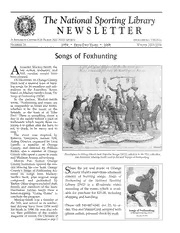
NSLM Newsletter - Winter 2006

ES 4755: GENERAL REQUIREMENTS FOR SAFETY OF LAMP CONTROL GEAR
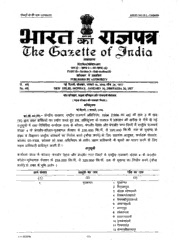
Extraordinary Gazette of India, 2006, No. 78

The Ratline

DTIC ADA454032: The Report of the Department of Defense on Fiscal Year 2006 Planned Expenditures from the Department of Defense Base Closure Account 2005
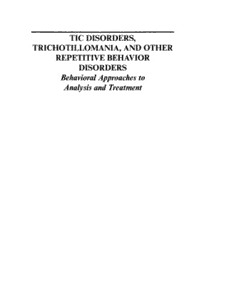
Tic Disorders, Trichotillomania, Other Repet. Behav. Disorders
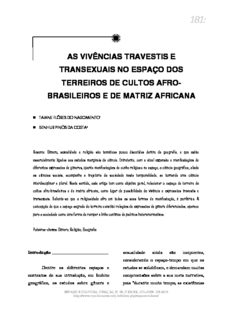
as vivências travestis e transexuais no espaço dos terreiros de cultos afro

Tafseer E Fahm E Quran Vol 1
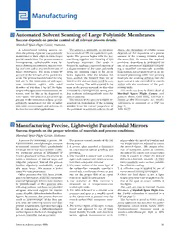
NASA Technical Reports Server (NTRS) 20100014086: Automated Solvent Seaming of Large Polyimide Membranes
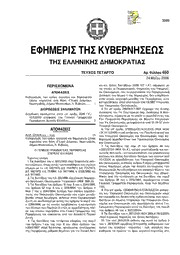
Greek Government Gazette: Part 4, 2006 no. 450
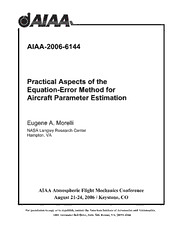
NASA Technical Reports Server (NTRS) 20060028193: Practical Aspects of the Equation-Error Method for Aircraft Parameter Estimation
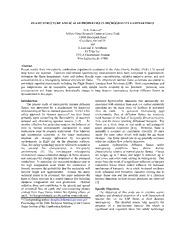
NASA Technical Reports Server (NTRS) 20060051730: Flame Structure and Scalar Properties in Microgravity Laminar Fires
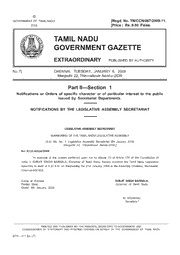
Tamil Nadu, 2009-01-06, Extraordinary, No. 7, Part IISection 1
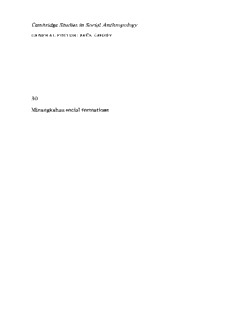
Cambridge Studies in Social Anthropology 30 Minangkabau social formations
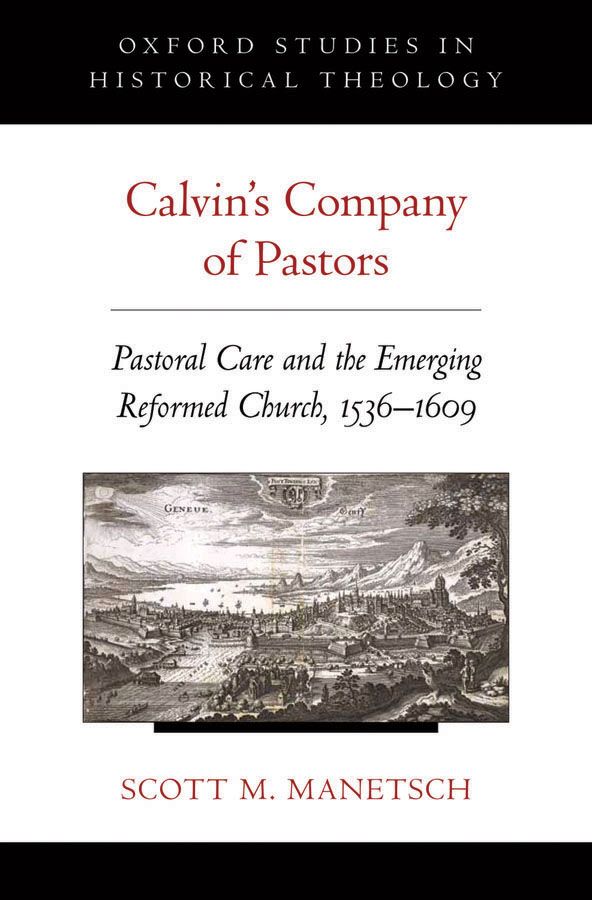
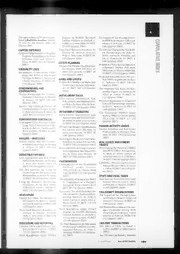
![A new species of the genus Polystoma (Polystomatidae, Monogenea) parasitic in Rana pleuraden Boulenges [Boulenger] book image](https://cdn.pdfdrive.to/media/content/thumbnails/a72260df-acae-48a6-9b1d-922d50398a65.webp)

